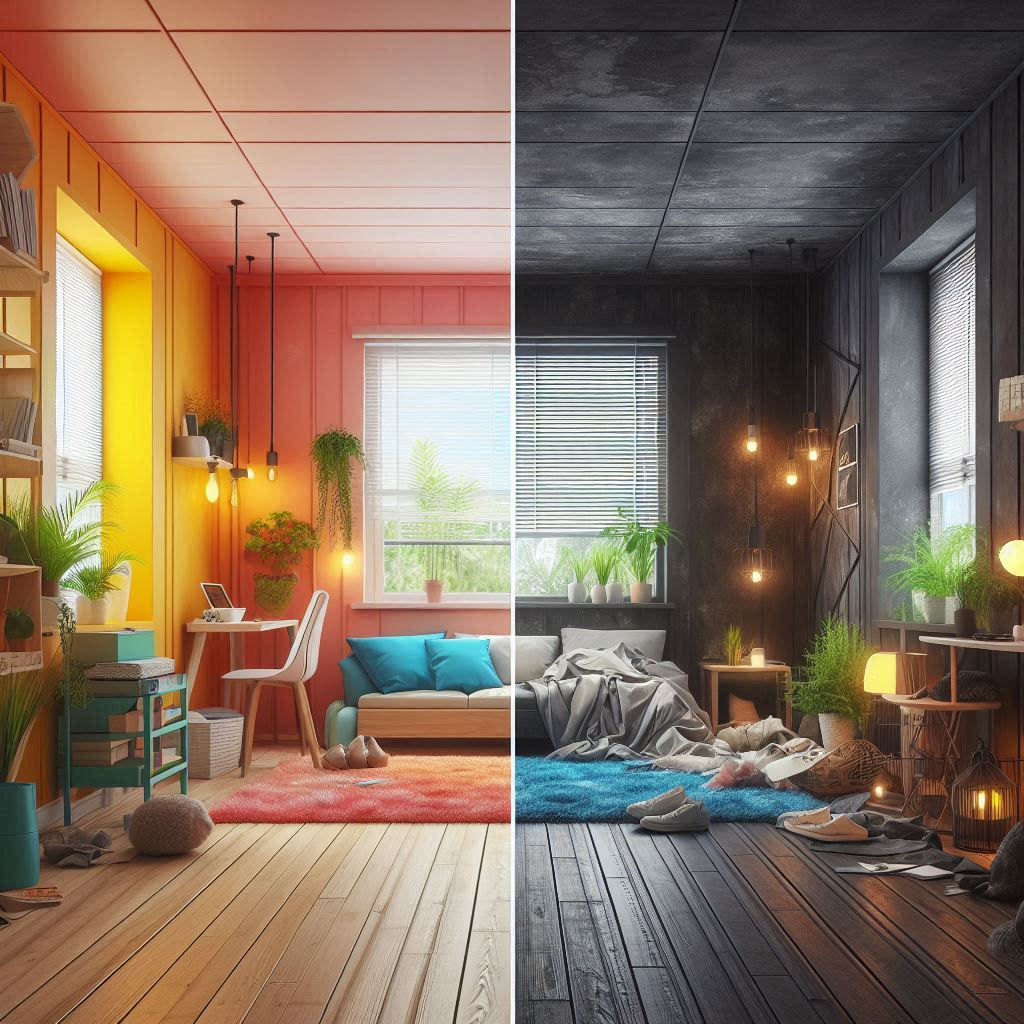How Interior Design Affects Your Mood And Mental Health
In the hustle and bustle of daily life, our surroundings play a crucial role in shaping our mood and mental well-being. While we often focus on external factors like work or relationships, the impact of interior design on our mental health is often overlooked. However, the truth is that the spaces we inhabit have a profound effect on our emotional state and overall happiness.
Interior design isn’t just about aesthetics; it’s about creating environments that support and enhance our well-being. From the colors on the walls to the textures of the furniture, every aspect of interior design can influence our mood in subtle yet significant ways.
Color Psychology: Brightening Your Space, Uplifting Your Spirits
Colors have the power to evoke a wide range of emotions and feelings. Bright, vibrant hues like yellow and orange can inject energy and positivity into a space, instantly lifting our mood and boosting our spirits. These warm tones are associated with feelings of happiness, optimism, and enthusiasm, making them perfect for spaces where creativity and inspiration are desired.
Imagine walking into a room with an orange accent wall and a matching ottoman. The vibrant color immediately grabs your attention, filling the space with warmth and vitality. Orange is known for its ability to stimulate the senses, encourage creativity, and spark lively conversations. Paired with a cozy ottoman, the room becomes a welcoming oasis where relaxation and socialization go hand in hand.
On the other hand, cool colors like blue and green have a calming effect on the mind and body. These soothing tones are often used in bedrooms, living rooms, and meditation spaces to promote relaxation and emotional balance. Green, in particular, is associated with nature and tranquility, making it an ideal choice for creating serene and peaceful environments.
Picture yourself in a green-themed living room, surrounded by lush foliage and soft, verdant hues. The space invites you to unwind and escape the stresses of the day, offering a sanctuary where you can recharge and rejuvenate your mind, body, and soul.
Texture and Pattern: Adding Depth and Interest to Your Space
In addition to color, texture, and pattern also play a crucial role in shaping the mood of a room. Soft, tactile fabrics like plush rugs and cozy blankets can evoke feelings of comfort and security, helping us feel more at ease in our surroundings. On the other hand, bold patterns and textures can add visual interest and excitement to a space, stimulating our senses and encouraging exploration.
By carefully selecting and combining different textures and patterns, interior designers can create dynamic and multi-dimensional environments that appeal to our senses on various levels. From smooth, polished surfaces to rough, natural materials, each texture adds its own unique character to a space, enriching the overall sensory experience.
Creating a Harmonious and Balanced Environment
Ultimately, the key to effective interior design is creating spaces supporting and enhancing our well-being. By understanding the psychological effects of color, texture, and pattern, designers can craft environments that promote happiness, relaxation, and overall mental health.
Whether you’re looking to brighten your mood with vibrant colors or create a calming oasis with soothing tones, Gambitz Designs is here to help. Our team of experienced professionals specializes in creating custom interior designs that reflect your unique
personality and lifestyle, ensuring that every space feels like a true reflection of you.
Contact us today to learn more about our interior design services and discover how we can help you create the perfect environment for your mental health and well-being. Together, let’s transform your space and elevate your mood, one color, texture, and pattern at a time.

